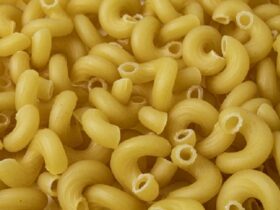The fast-food industry mostly targets the kids – not only in almost every TV commercial but also by being present in schools and on educational TV. Fast food is all around us and home and school are 2 places where kids will get the habits of a healthy or unhealthy lifestyle.
Are there schools that serve junk food to kids? Do all of them have vending machines? Does the fast-food industry have specific marketing for schools and kids? Those and many more questions are answered in this article. Find out all the important data and statistics!
5 Important Fast Food In Schools Statistics (Editor’s Pick)
- Around 61% of children have junk food availability in school.
- 67% of schools have advertisements for unhealthy food.
- Companies spend $150 million on marketing food in schools.
- Unhealthy food ads are broadcast on educational TV too.
- Eating junk food regularly leads to lower math and reading skills.
15 Fast Food In Schools Statistics
1. About 30 million American children eat in school every day.
For most kids, school lunch is one of the main meals of the day. Such meal needs to have proper and vital vitamins and minerals in order to give kids all the right nutrients needed for the day. In the US, approximately 30 million children eat a meal in school every single day, according to the research made by Kappan.
Source: Kappan
2. Around 61% of children have junk food availability in school.
The child food consumption basically dependents on the availability and offer. The research made by NCBI showed that 61% of children had access to junk food in school, whether that is in the cafeteria or by a vending machine.
Source: NCBI
3. More than half of high schools have company-sold food vending machines.
Vending machines often offer some kind of unhealthy food like sweets, candies, fast-food sandwiches, sugary drinks, and more. And a lot of schools have such food options. There are 51.4% of high schools in America that have vending machines compared to 24.5% of middle-schools that have them.
Source: MedicineNet
4. By consuming junk food, teenagers and younger children get up to 310 extra calories.
Junk food consumed in school often leads to an extra amount of consumed calories. Teenagers and younger children who consume fast food have 160 to 310 extra calories of the recommended daily caloric intake. Such consumption often leads to overweight problems and obesity.


Source: Medical News
5. Around 67% of schools have advertisements for foods that are high in fat and/or sugar.
According to the study made by Food Marketing, 67% of schools have some type of ads that promote food high in fat and/or sugar. Fast-food advertising is a multi-billion worth contract and kids are the most targeted group. On average, they see 3 to 5 food ads per day. That number is even higher due to the presence of such ads in schools.
Source: Food Marketing
6. Millions of dollars worth marketing.
According to Salud America! and their research made in 2009, companies spend around $150 million per year on marketing food and beverages in elementary, middle, and high schools. Junk food ads can be seen on buses, bathroom stalls, gyms, and book covers. Also, many fast-food companies give schools sponsored educational materials.
Source: Salud America!
7. Unhealthy food ads are broadcast on educational TV too.
The fast-food industry is present in all aspects of life, especially those that are linked to kids and teenagers. According to the study made by Salud America!, the industry spends around $200,000 in America for advertising time to target 40% of the nation’s teenagers for 30 seconds. And those 30 seconds can have a big influence on kids and their eating habits.
Source: Salud America!
8. Vending machines are present in 97% of high schools.
According to the NCBI and their study about junk food in schools, almost 100% of high schools included in the research had vending machines. 82% of middle schools and 17% of elementary schools have vending machines too. A vending machine is a quick way for kids to get some type of unhealthy meal and junk food.
Source: NCBI
9. Some schools earn money from those vending machines.
Nearly a third of all high schools and middle schools in America, earn between $1000 and $9,999 from vending machines. Small numbers of them earn between $10,000 and $50,000, and only a few of them around $50,000. According to those statistics, schools earn quite a money by giving kids such availability to unhealthy food.
Source: NCBI
10. In America, 71% of schools are trying to make a significant effort to offer healthy food choices on their menu.
Significant effort isn’t enough when it comes to kids. Kids must consume healthy food rich in minerals and vitamins in order to get all the proper and vital nutrients needed for concentration, focus, and studying. And schools should make an effort to provide them with such meals and – simply make that happen.
Source: Men’s Health
11. All meals must provide one-third of the recommended dietary allowance.
All schools need to prepare and serve meals, foods, and beverages which meet the health and nutrition needs of the kids. And this needs to be a must for all schools. A school is a place for creating certain habits just like home. And a healthy lifestyle is certainly one of those habits.
Source: Men’s Health
12. Teachers often hand out coupons for fast-food franchises as a reward for students’ good work.
There are many ways to reward a student for good work that don’t include coupons for fast-food franchises. This way of rewarding is a bad habit for kids which will they bring home and expect their parents to reward them the same way. Fast food is an addiction that leads to serious health problems. This way of rewarding is just wrong.


Source: Kappan
13. Eating junk food 4-6 times a week leads to lower math and reading skills.
According to an interesting study made by Medical News, eating junk food can seriously affect kids. Regular consumption of fast food, up to 6 times a week, leads to lower math and reading skills. And that leads to problems in school, focus, concentration, and grades.
Source: Medical News
14. In the eighth grade, 35.5% of kids in schools with junk food were overweight.
WebMD did a study for kids in the eighth grade in America. In schools that serve junk food, 35.5% of kids were overweight compared to 34.8% of overweight kids who go to schools without junk food. Now, we can see that the percentages aren’t so different after all, however, even the smallest difference can make a positive impact on health.
Source: WebMD
15. In 2008, 20% of children were obese.
There aren’t specific data and research about the subject done in recent years, however, if we look back in 2008 and the study made by MedicineNet, 20% of children aged 6 to 11 were obese. This is quite a high number. Since the fast-food industry had a huge growth in the last decade, the number of obese kids has definitely grown. And schools are the place for creating healthy meal habits, along with those made at home.
Source: MedicineNet
To Wrap It Up
Kids are the most vulnerable group when it comes to the fast-food industry and consumption. The industry targets them with advertisements in every aspect of their life and now, junk food is available in a lot of schools. If they’re not, then in the small radius they can find a fast-food restaurant or store. School as an educational institution should definitely help kids create healthy habits of consuming nutritious food which doesn’t lead to health problems and obesity.


















Leave a Reply